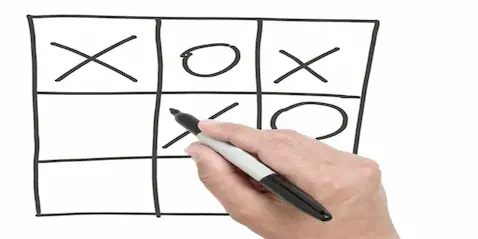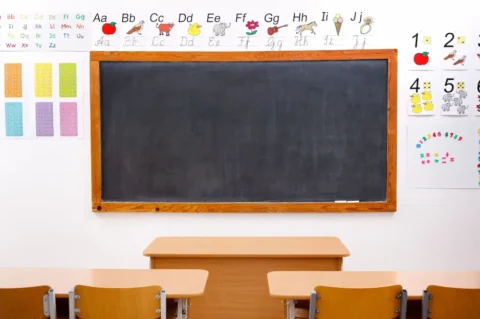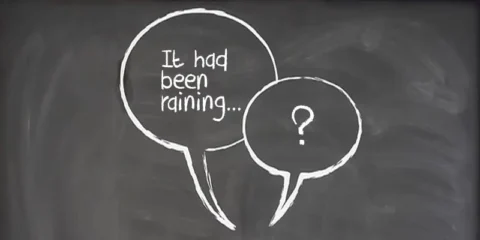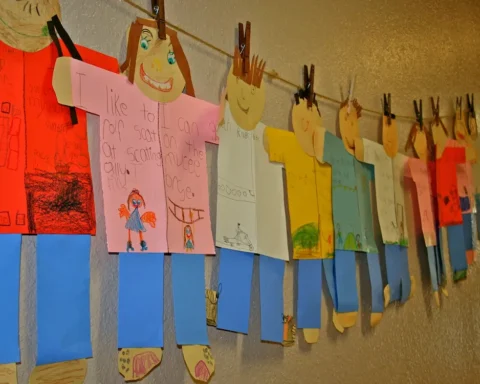How often do you find yourself staring at your lesson plan, trying to think of something new to wake up a group of tired students, or to make grammar practice a bit more interesting? If you’re like most teachers, you don’t always have the time – or energy – to invent brand new activities for every class.
That’s when it helps to have a bank of familiar activities to fall back on. They may not be new, but they’re effective, flexible, and can be adapted to different language points and levels with almost no preparation. With a clear focus, a reason for students to be motivated (competition often works well), and clear instructions, these activities keep lessons engaging without adding to your workload.
Books like Five-Minute Activities (Ur & Wright, 1992) or Keep Talking (Klippel, 1984) are full of these kinds of ideas. And don’t forget your colleagues – some of your best ideas may come from them!
Here are ten activities I’ve used and reused in classrooms from Indonesia to Spain. They’re simple, quick to set up, and dependable when you need something that works. They’re not new – and that’s exactly the point. They’ve stood the test of time because they’re adaptable, effective, and trusted by teachers in all kinds of contexts.
Variation on “Backs to the board”
You may already know Backs to the Board: a representative from each of two teams sits facing away from the board while their teammates explain the word you’ve written, without saying it or using variations of it.
To extend the activity, try whole sentences instead of single words. Teams have one minute to explain the sentence to their teammate, again without using any of the words, spelling them out, or resorting to gestures. You can adapt the sentences to any tense or structure you want to practise, making this activity useful for a wide range of language points.
Sentence reduction
Write a long sentence or short paragraph on the board, rich in vocabulary. In teams, students take turns erasing one, two, or three consecutive words. After each change, the sentence must still make grammatical sense. If it doesn’t, replace the words and move to the next team.
Continue until no further reduction is possible. Students are often surprised by how short the sentence can become while still remaining correct. The winning team is the one who removes the most words.
Variation: Do the opposite – start with a single word and have students expand it into longer and longer sentences.
Spelling and Vocabulary Chain
Write a single letter on the board, for example S. The first student thinks of a word beginning with S and adds the next letter, e.g. ST. The next student adds another letter to build on that beginning, and so on.
At any point, if a student believes no word exists with the current sequence, they can challenge. The writer must then name the word they had in mind. If they can’t, they’re out. If they can, the challenger is out. The last student remaining is the winner.
This is a quick-fire activity to practise spelling, build vocabulary, and keep students on their toes.
Picture stories
Give each group four or five pictures (find them in old magazines or print from online). Ask them to create a story using the pictures in sequence. You can keep the context open or guide it by choosing a particular tense, function, or vocabulary set.
If the focus is oral communication, don’t let them write the story down – have them tell it aloud. If you also want to practise writing, ask them to write as they go. When finished, each group shares their story with the class.
This activity works well for creativity, fluency, and narrative practice, and is easily adapted for different levels.
What’s true?
As a getting-to-know-you activity, ask each student to write three true statements about themselves and two false – but believable – ones. One by one, they read their five statements to the group. The others ask questions and discuss to decide which are true.
To introduce the activity, model it yourself first by writing five statements about you on the board.
Variation: Instead of full sentences, ask everyone to write five one-word “facts” about themselves (you can model this as well – e.g. 32, Liverpool, Three, Smith, Doctor). In pairs, students then try to guess the questions that would produce those answers.
Continue the story
Divide the class into small groups and give each one a different opening line to a story. After a few minutes of writing, groups pass their paper to the next group, who continue the story from where it left off. Keep passing until the papers return to the original groups, who write the conclusion and then share their stories aloud.
For a quicker, oral version, run it as a chain story: dictate the first sentence, then have each student add a sentence in turn. To practise a particular structure or vocabulary item, assign it beforehand and require each student to use it somewhere in their sentence.
This activity encourages creativity, builds fluency, and can be easily tailored to the language point you want to practise.
Energetic Writing Practice
Divide the board into three columns, each with a grammar point or structure you want to practise (e.g. first, second, and third conditional; yes/no questions; tag questions).
Students work in pairs: one is the writer, the other the runner. Give each pair a stack of small slips of paper and some Blu-Tack. The writer creates a grammatically correct sentence for one of the categories, then hands it to the runner, who sticks it on the board. After a few minutes, shout “Change!” so they swap roles.
Set a five–ten minute time limit. At the end, pairs check the sentences on the board together. Incorrect ones don’t count toward the team’s total. The pair with the most valid sentences wins.
Variation: Increase the challenge by requiring each sentence to contain at least ten words.
Need another writing activity? Try Writing with story grids.
Secret identities
Give each student a secret famous identity written on a slip of paper and taped to their back or forehead. They circulate and ask yes/no questions to discover who they are.
You can adapt the focus by choosing identities that fit the grammar you want to practise:
- Past simple: all famous people are dead (Did I live in the USA?).
- Present perfect: all are still alive (Have I acted in many films?).
- Future forms: imagine that the people are “not yet born” (Will I be an actor?).
This simple game combines speaking practice with plenty of movement and interaction.
Opposites
Stand the students up and call out two opposing ideas, people, concepts, adjectives, or places (e.g. beach or mountains, Spielberg or Hitchcock, red or blue). Point to one side of the room for the first option and the other side for the second. Students move to the side that matches their choice.
Pick a few students each time to explain their choice. If you like, let the activity develop into a short debate between the two groups.
This works well as a warmer or energiser and gives students plenty of opportunities to justify opinions.
Grammar and gap fill auctions
Split the class into teams and give each team a budget (e.g. $100 or ¥10,000).
Grammar auction: Prepare a worksheet of 10+ sentences, some correct and some incorrect. Teams discuss each one, decide if it’s right or wrong, and then place a “bet”. If they’re correct, they double their stake; if not, they lose it.
Gap-fill auction: Provide sentences with missing words. Teams bet on the correct answer for each gap.
Using real or photocopied money adds to the atmosphere. The team with the most money at the end wins.
Note: In some contexts, even pretend gambling may be culturally inappropriate. If that’s the case, you can easily adapt the activity by replacing money with points, tokens, or even coloured slips of paper.
This activity turns error correction and gap-fill practice into a lively competition that students take seriously.
Wrapping Up
These ten activities aren’t new, but that’s their strength. They’ve stood the test of time because they’re simple to set up, adaptable to many language points, and consistently effective in keeping students engaged.
For more inspiration, take a look at our downloadable worksheets and activities or our list of 25 warmers and fillers.
Do you have a go-to no-prep activity that always works for you? Share it in the comments below.











8 comments
Bruce
Thank you for some GREAT ideas – theory born out of practise makes all the difference between boredom and language acquisition. Gracias amigo!
Van Anh
Such a great resource for novice teachers as well as those who have run out of ideas for use in class. I have been in the situation when my resource bank seems to be ‘overdrawn’, and from then on I have always had several activities up my sleeve. Reading your tips, I can add some more things to my ad hoc things to use in emergencies. Thanks so much!
Cintia
Very interesting and appealing ideas, but sometimes I find it difficult to apply them in large classrooms since students become highly excited and it is difficult to control them. But anyway, great ideas!!!
Japhia
Thank you very much for all these ideas. If you want an extra one. Here it is… I use the “spelling ball” I think of a word beginning with ‘a’ and say ‘ambition’, so then I throw the ball to a student and he/she has to think of a word with ‘n’ and they have only 30 secs to do so.
Sok Sangvat
Thanks very much for sharing this article. It has given me some ideas on how to make my classes more lively. I think all 10 points are good, but it’s a bit difficult to apply all these to students who are in developing countries, like Cambodia. Generally, students here are so weak in their productive skills-speaking and writing.
Chloe
Sorry to put a damper on things but I was disappointed by the article as I was told about all of these activities during my CELTA training. I regularly do ‘back to the board’, ‘sentence auctions’ etc. with my EFL / ESOL students. Perhaps there is a limit on how many genuinely ‘new’ and exciting activities you can do?
On the plus side, the article has reminded me of some of the activities that I haven’t been using lately, so I will put those into use again!
A favourite with my intermediate classes is a cloze activity. I divide a text into nouns and pronouns, verbs, and other words. Each group of students has one set of words.
1. Read out the text. Students write as many words as they can.
2. Distribute words to the three groups a verb group, noun group and other group. Students fill in as many gaps as possible collaboratively.
3. Read the text again.
4. Students swap groups so that each group has two sets of words.
5. Either give students a complete version of the text so that they can check for themselves – or, one student comes to the board and asks the others to call out what they think the correct version is. This is a good conclusion as the whole class gets involved and there is often debate about what is right or wrong.
Another good source of ideas is ‘Five Minute Activities’ by Penny Ur. She has the sentence reduction idea in there – among many others.
Happy classes everyone!
Jorge
It’s interesting to know these activities and how to make your classes fun and forget routine. Students need motivation to keep studying and learning English. They are easy activities but you could adapt them to any context or grammatical structure to reinforce something that you have already taught.
Guillermina
Holidays have just finished in Argentina… and I have been thinking a lot of some ideas to motivate my students… Thank you for these good tips to start classes again!